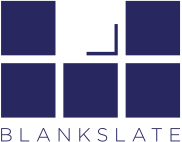Elise Udy is no stranger to change. Last year, she left her home in Sydney, Australia to begin a new adventure in Vancouver. Now, here on the other Pacific coast, Elise is managing HR for Elastic Path. Elise chatted with us about what drew her to the ecommerce company, and why we all need to be “change agents” in a global talent market.
“When it comes to change management, if people don’t know why it’s important, and why they’re doing it, you’re not going to get buy-in.”
What drew you to Elastic Path?
I was looking for something beyond a “maintain” role. I didn’t want to simply carry on what somebody else has put in place: I wanted to be a change agent. When I came to Elastic Path, they were ready to do something different. It was great timing.
How do you define success?
Success for me is the ability to attract smart, collaborative people. I want to help them build careers that are mutually beneficial to them and the company. I’m realistic about the fact that not everyone is going to stay in a role forever, but if we can help build connection, and show people how much their impact counts—that is success for me.
How do you attract top developers to Elastic Path?
For a developer, interesting work is rare. Many roles are limited to basic hacking, without opportunities to contribute ideas and direction. At Elastic Path, we really want people with great ideas—problem-solvers who are entrepreneurial thinkers. I think that is the differentiator for us. We only bring on people who we think are up for a challenge and a different perspective. Our team has very high standards for who they recruit. Finding the right talent can be very difficult, but it means that when we do find someone, they really fly.
Who’s involved in the hiring process?
The team is very much engaged in the process. We make sure we have hiring teams as opposed to hiring managers. Hiring is not just a manager’s decision, it affects everyone. Elastic Path is a very flat, non-hierarchical company. That means teams are able to get involved in these kind of impactful decisions. For me, it shows a real buy-in from a change management perspective. It’s simply a best practice for us, and one of the reasons we’ve been so successful with the new hires we’ve brought on.
What’s been your biggest “change management” challenge?
When I first took a look at building a performance management program, I realized there was nothing to anchor it on. Without that operational foundation it’s very difficult to build a PMP, so we took a step back. We looked at what we had to do in terms of planning and governance, and started building the program around that. We flowed quarterly organizational goals through to department organizational goals—and then through to individual goals. That way people could see how their work directly contributed to the success of the company.
Performance management programs can be tough to sell. How did the team respond?
We didn’t roll it out at once. We did bite-sized pieces. Elastic Path teams work in an Agile environment where people do two-week sprints, iterate and give feedback, then come back and repeat it. It’s an evolving process with constant feedback loops and continuous learning. So we mirrored that process with the performance management program. We got it down to three components: Plan, Do, Review. So because the format was familiar, people felt comfortable and confident going into it.
How did you simplify the PMP process for Elastic Path?
Normally when you introduce a Performance Management Program there’s a lot of resistance. It’s very difficult to get traction and buy-in. So we tried to remove as many barriers as we could. Now the process is very simple. We focused much more on our 1-on-1 conversations. To avoid a process-heavy system, we used a simple one-pager that emphasized the conversations that came out of those 1-on-1s. I think that really helped. People could see why this process mattered, and how their role counted toward something. When it comes to change management, if people don’t know why it’s important, and why they’re doing it, you’re not going to get buy-in. As Elastic Path continues to scale and grow, these ongoing, embedded change management practices are absolutely vital for us.
A big thanks to Elise for sharing her expertise with us. Here are some key takeaways from our chat:
- Attract top developers by offering challenging roles with depth and decision-making power.
- When rolling out a big HR program, mirror the processes already in place at your company.
- Hiring is best done by hiring teams, rather than by a single hiring manager.
If you’re an HR professional with a story to tell, drop us a line—we’d love to feature you on The Slate.
